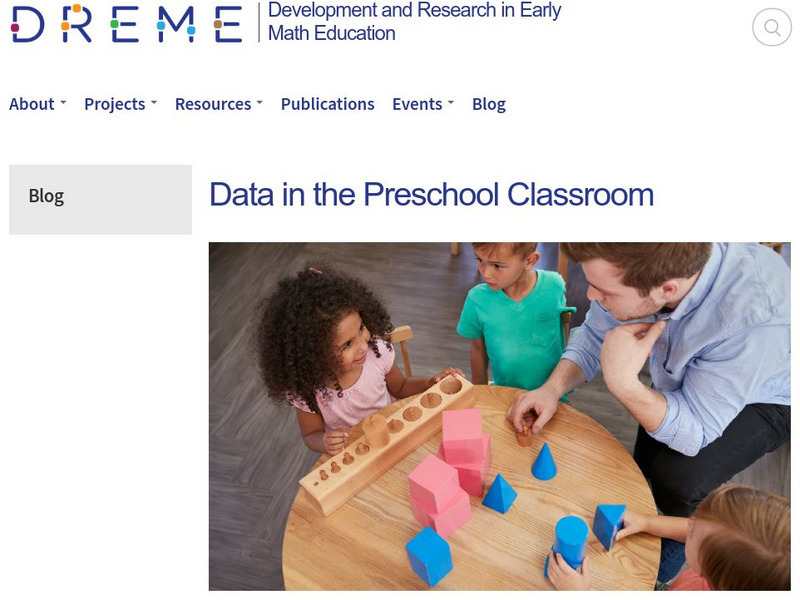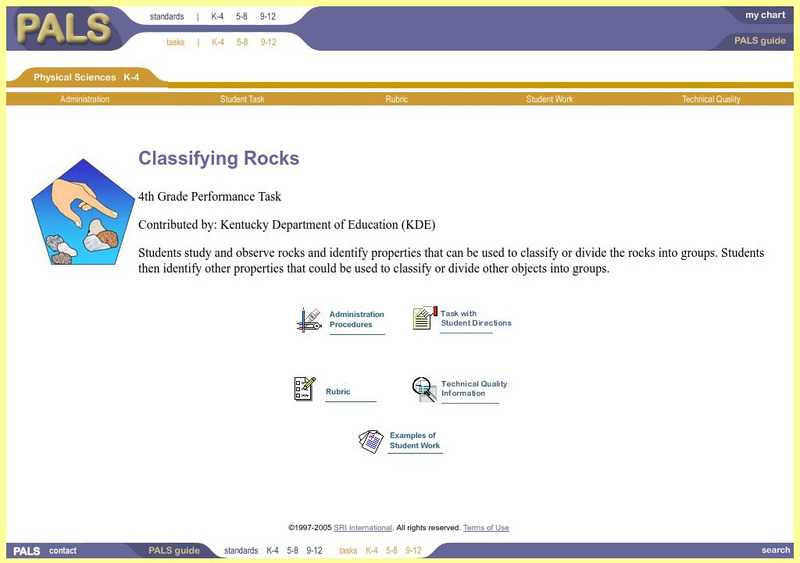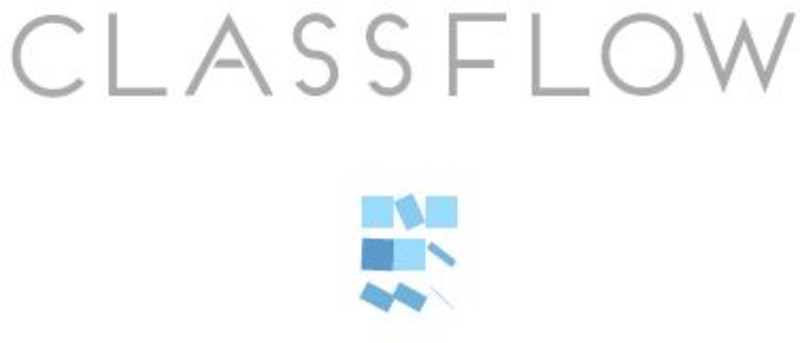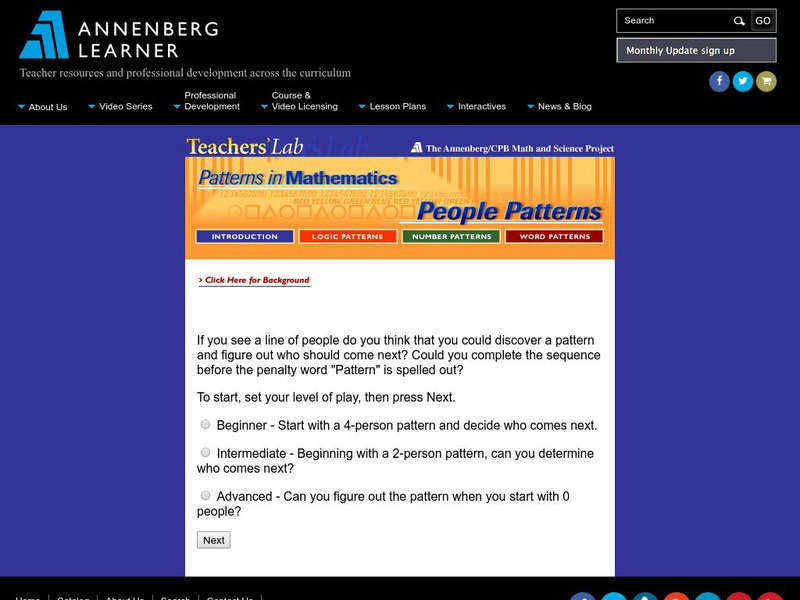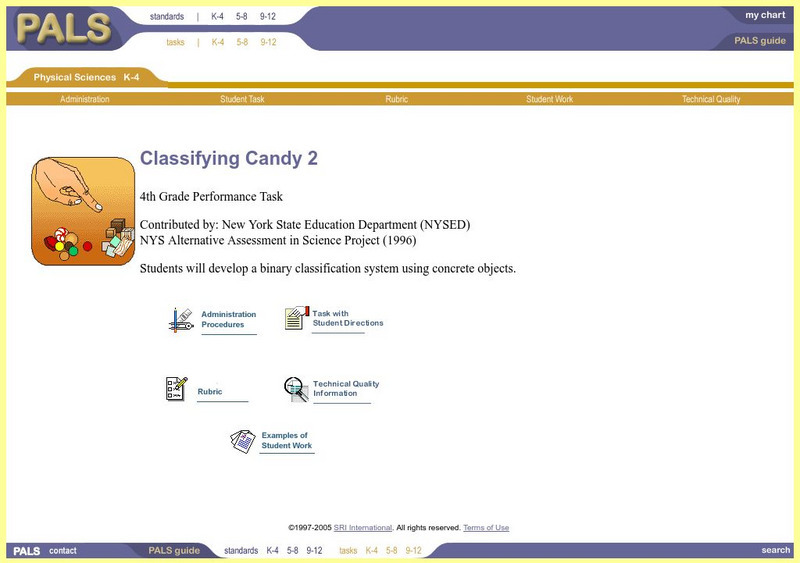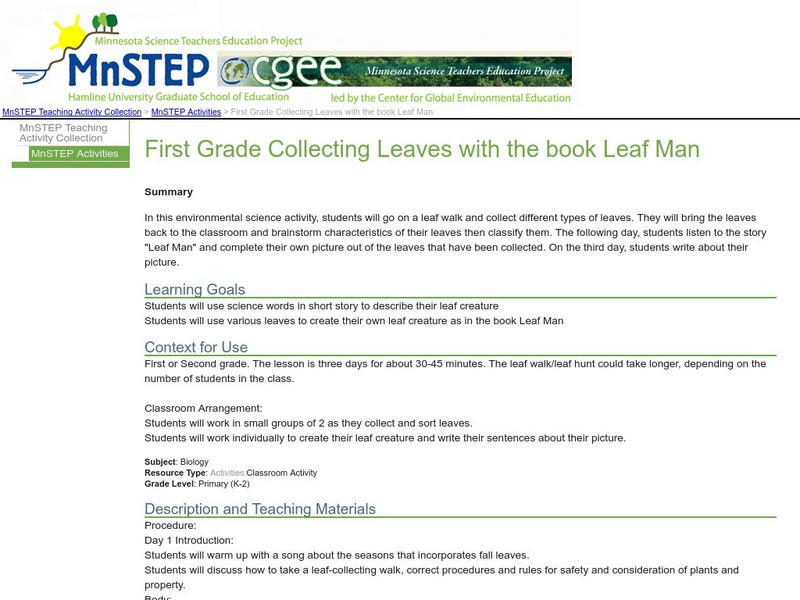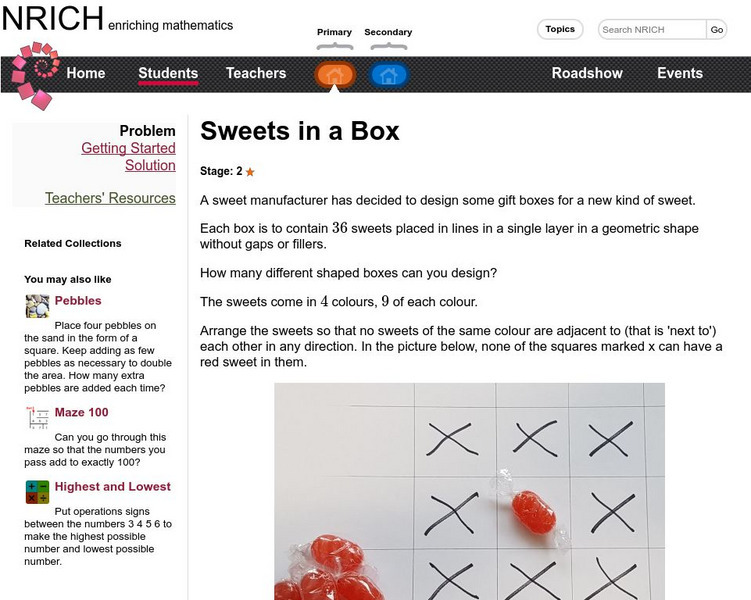PBS
Pbs Learning Media: Measuring With Mixie Bot
Children can measure with a favorite character to understand the value of standardized units of measure, such as inches and feet. This activity will help them practice measuring and understand comparing the measurements of one item to...
Stanford University
Dreme: Data in the Preschool Classroom
What are the important concepts involved in data collection and data use in the preschool classroom, and how can teachers support the mathematics of data? This article gives a brief description of the concepts that children need to grasp...
Utah Education Network
Uen: Cool Collectibles and Super Sorts
Second graders will create a classroom rock collection.
SRI International
Performance Assessment Links in Science: Classifying Rocks
This is a performance task where students sort and classify rocks based on their properties, then demonstrate how they can transfer their understanding to decide on ways they might sort and classify other types of objects.
ClassFlow
Class Flow: Rational and Irrational Numbers
[Free Registration/Login Required] By the end of the lesson, students will classify numbers into number families to help understand how to distinguish the difference between rational and irrational numbers. Students will demonstrate this...
Annenberg Foundation
Annenberg Learner: Patterns in Mathematics: Guess My Button
This website gives students an opportunity to sort and classify attributes of a group. The applet responds to each selection made and guides student to the next step.
Annenberg Foundation
Annenberg Learner: Patterns in Mathematics: People Patterns
This interactive website offers young students an opportunity to discover the pattern and predict who will come next. Feedback and guidance are given for each response. It also offers three increasingly difficult levels that are available.
SRI International
Performance Assessment Links in Science: Classifying Candy 2 (Lesson)
For this fourth grade performance assessment task, students sort candies according to their properties and demonstrate their understanding of binary classification principles.
Other
Science4 Us: Materials
Students use a dichotomous key to sort materials into natural and man-made and sort further using the adjectives rough and smooth; this activity builds both science and language skills as students classify materials and build deeper...
CPALMS
Cpalms: Observable Properties of Matter
[Free Registration/Login Required] Students will sort objects according to their observable properties, such as size, shape, color, temperature (hot or cold), weight (heavy or light) and texture. Included are printable resources, a...
PBS
Pbs Mathline Lesson: Geometry, It's a Perfect Fit [Pdf]
This two-part geometry lesson plan has young scholars identify, describe, and classify two-dimensional shapes. Students engage in hands-on activities including identifying shapes in the classroom, creating patterns with shapes,...
Science Education Resource Center at Carleton College
Serc: First Grade Collecting Leaves With the Book Leaf Man
In this environmental science activity, students go on a leaf walk and collect different types of leaves, and then brainstorm characteristics of their leaves then classify them.
Quia
Quia: Categories Battleship
In this interactive game, students try to sink the computer's battleships by naming the correct category for the words listed. There are three levels of play provided: Easy, Medium, and Hard.
Quia
Quia: Rags to Riches: Categories Ladder
In this interactive, millionaire-style game, students see groups of three or four items and select the category that fits each group.
University of Cambridge
University of Cambridge: Nrich: Sweets in a Box
Improve logic and pattern creation skills performing this game. Includes solution.
Quia
Quia: Rags to Riches: Category Ladder Iii
In this interactive, millionaire-style game, students see groups of three items and select the category that fits each group.
ABCya
Ab Cya: States of Matter
States of Matter is an educational activity for kids to learn about the different properties of matter. The lesson will introduce solids, liquids, and gases. Students will then be assessed through a sorting activity where they will...
SMART Technologies
Smart: Adventures With Adverbs
Students will identify, sort, and classify adverbs as well as compare and contrast adjectives and adverbs in this whiteboard lesson provided by SMART.
E-learning for Kids
E Learning for Kids: Math: Olive Trees: Data & Chance
Ariel is taking a survey. Do you want to help her collect and describe data?
Science Education Resource Center at Carleton College
Serc: Minnesota Fish Families
Students will be introduced to Minnesota Fish from their local area, then sort, identify, and classify fish using observations.
CK-12 Foundation
Ck 12: Arithmetic: Order of Real Numbers Grade 8
[Free Registration/Login may be required to access all resource tools.] Learn how to classify, order, and graph real numbers.
Polk Brothers Foundation Center for Urban Education at DePaul University
De Paul University: Center for Urban Education: Early Chicago Environment & People [Pdf]
"Early Chicago Environment & People" is a one page, nonfiction passage about the Native Americans who lived in what is now Chicago. It explains how they lived and how Chicago got its name. It is followed by constructed-response...
E-learning for Kids
E Learning for Kids: Science: North Sea: Netherlands: What Is It Made Of?
Finn is joining his father on their boat. Join them and help Finn sort materials based on their properties.
University of Regina (Canada)
University of Regina: Math Central: Lesson: Mr. Z's 5 Minute Game of Geometric Pandemonium
Students make a series of geometric drawings of points, obtuse angles, rays, polygons, and the like. Each child is given one but not allowed to show anyone else. The drawing is then taped to the back of the child in front of them. The...

